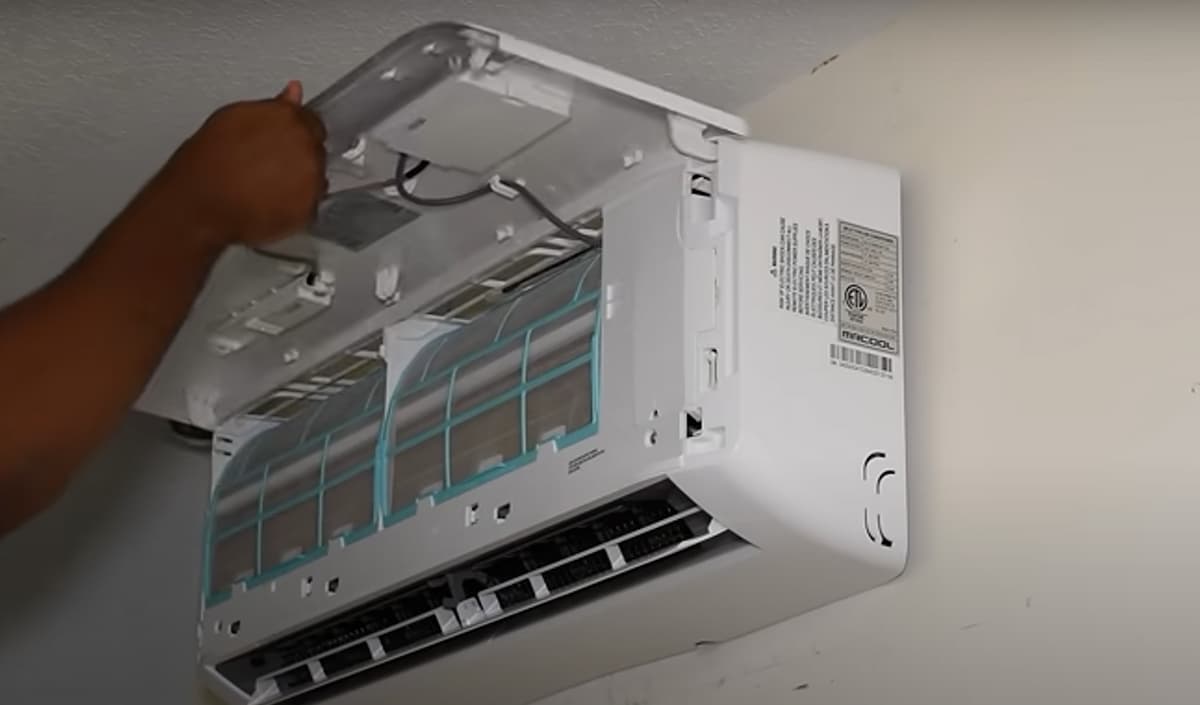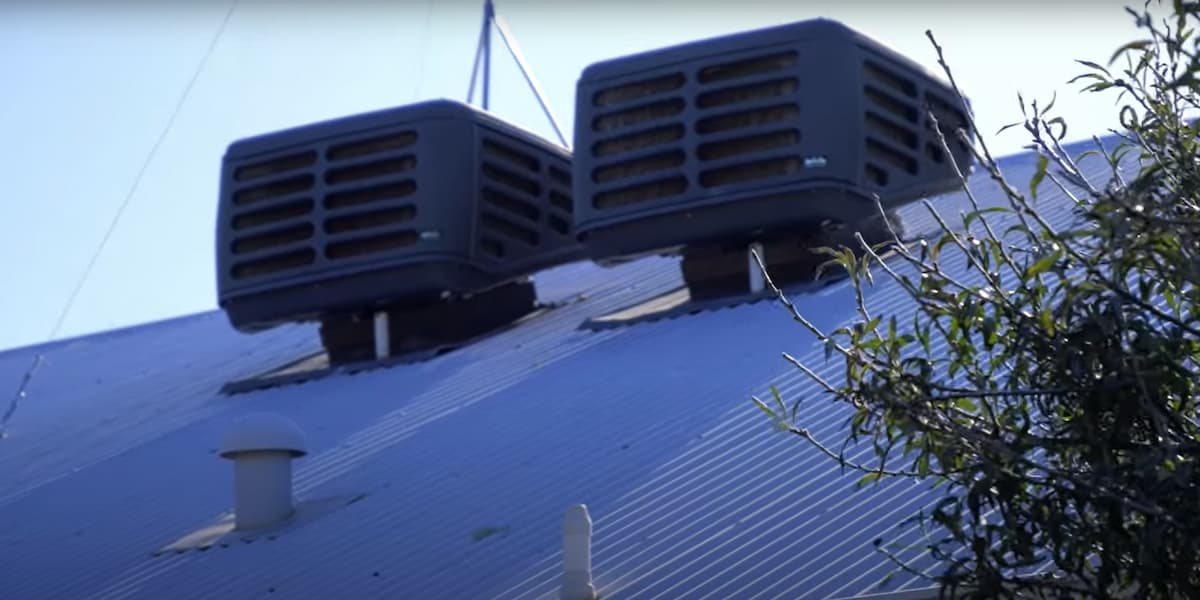
It’s what everybody wants, but not many people can afford it. This means ducted air conditioning is an excellent status symbol. Why do you think the rich and famous always have full house–conditioned mansions? They’re trying to show off their wealth without spending too much on the electricity bill.
A ducted air conditioner is perfect for keeping your home comfortable all year round. By using the latest in refrigeration and heating technology, we can provide clean and healthy air throughout your entire living space.
How Much does Ducted Air Conditioning Cost to Run?
In Australia, a standard household averages about 10-15 kilowatt-hours of electricity a day. A modern ducted air-conditioner can use as little as 3 kilowatt-hours, and some on the market today go as low as 1.1 kilowatt-hours. This makes them more efficient than solar panels for capturing energy from the sun, sometimes. So your ducted air con may use just three or four units of electricity a day. That’s probably only two or three dollars’ worth, depending on how much you pay for electricity.
- Overall a small ducted air conditioning unit of up to 4kW costs around $300-450 annually.
- A medium ducted air conditioning 4-6kW unit costs around $400 to $550 annually.
- A large ducted air conditioning unit that is over 6kW can cost anywhere from $300 all the way up to $600 annually.
Types of Air Conditioning Systems
There are three types of air conditioning units in Australia:
- Window units,
- Split-systems
- Ducted systems.
Window Unit
Window units provide a basic function but they can be loud, have poor filtration and the window frames may suffer from damage due to condensation.
Split System
Split-systems cool individual rooms through splits in your home’s wall. They’re very popular and work well in cooler weather.
Ducted Air Conditioner
Ducted systems use a central unit in a large room in your house, which then pumps conditioned air into other rooms via ductwork. They’re very quiet, efficient and healthy because they remove all moisture from the air before pumping it into your living space. They also don’t conduct electricity or any kind of energy throughout their entire structure like split systems do–so there is less chance of a house fire.
Components of a Ducted Air Conditioning System
A ducted air conditioning system has three main components:
- central unit
- ducts
- grilles or diffusers.
The Central Unit
The central unit houses the compressor, condenser, evaporator and receiver. The compressor pumps refrigerant through coils in the condenser and evaporator. When it does this, it removes heat from your house to create a cooling effect. An expansion valve within the evaporator then reduces the pressure of the refrigerant after it has passed through the coils, which allows it to expand and become a gas again. This means heat is given up by the liquid turning back into a gas, so your house stays cool.
And that’s how you get your cool air.
Ducts
Ducts are usually made from PVC or ABS plastic. They are flexible but they are strong enough to hold their shape, despite being able to bend sharply around corners–and for this reason, most ducting is round in cross-section.
Grilles and Diffusers
Grilles serve as the point of air delivery. They cover an opening in the wall or ceiling and are covered with a special kind of diffuser. The grille is attached to the central unit while the diffuser distributes air evenly throughout your house.
Ducted Air Conditioning vs Split System Running Costs
The running costs of a split system air conditioner are about half that of a ducted one, with an average usage of around 7 kilowatt-hours per day. This only gets the unit to the cost of up to one or two dollars per day. You can reduce this usage by using power-saving modes and the timer.
Split system vs Ducted Air Conditioning Cost for Heating
A large split system may have running costs up to $1,000 per year, depending on your location and how well insulated you are. If you have an inefficient heater or don’t have insulation at all this figure may be closer to $2,000 per year.
Heating costs are about the same for both systems. A large ducted system can have running costs up to $800 per year, depending on your location and how well insulated you are. If you have an inefficient heater or don’t have insulation at all this figure may be closer to $1,600 per year.
Why are Split Systems Less Expensive to Run than Ducted Air Conditioning?
A split system doesn’t need to supply hot air to the furthest parts of your home.
A split system is an efficient design that doesn’t need long ducts to reach your entire house. It only requires a short duct to reach the room where the central unit is installed. That’s because the cooler, conditioned air doesn’t have to travel very far before being blown back into your house.
Central units for split systems are also much smaller than those used in ducted systems. They use less electricity and they don’t need to be cooled as well since they’re not surrounded by so much open space.
Why Would I Choose a Ducted System Over a Split System?
If you want cool, clean air throughout your entire house or workplace then you could consider choosing a ducted air conditioning system. They also offer the best filtration of any type of cooling system–keeping your indoor air quality high and removing dust particles from the air that passes through the filters. High-quality filters can remove 99 per cent of common allergens like pollen, mould spores and dust mites.
Ducted Air Conditioner Running Costs
A ducted air conditioning cost averages around $300-$800 per year. The only thing you could really take into consideration is the size of your home and how well insulated it is. Most houses can fit a medium-sized ducted air conditioner, but if you have lots of open rooms and not much insulation you’re probably better off with an extra-large air conditioning system.
Which is a Better Choice, Ducted or Split System?
It depends on what kind of lifestyle you lead. If you enjoy travelling, like to move around a lot or don’t live in one place for too long, it would be more convenient to go with a split system because they are easier to install and can be moved around.
But if you want your home to always stay at the same temperature no matter where you are, then choose ducted air conditioning. A ducted unit never needs servicing and is perfect for quiet suburbs where there’s very little fluctuation in temperature throughout the year.
How do I Calculate My Air Conditioner’s Energy Efficiency?
A simple way to determine how efficient your air conditioner is is to divide the wattage by the unit price. For example, a 9000 BTU unit at $350 may have an efficiency of 3500/350 = 10. If you want an air conditioner that uses more energy than it outputs, get something more expensive.
Can I Reduce My Ducted Air Conditioning Running Costs?
You can save up to 30% on your electricity bills with some clever tricks and tweaks around the house. For starters, avoid setting the temperature too low as your air conditioner may always need to work harder. If you have a ducted system it would also be a good idea to insulate your home’s roof and ceiling cavity before installing the unit so that you use less power to cool or heat your living space.
What is Ducted Air Conditioning?
Ducted air-conditioning is a system of heating and cooling your home. It has one outdoor unit which sends cool or warm air along plastic pipes called “ducts” throughout your home.

How does Ducted Air Conditioning Work?
A large, usually windowless wall in your house may have two small doors on it where the refrigerant lines are fed into the indoor unit. This can go inside a roof cavity if you have no hallways but it’s more common to put this indoors somewhere unobtrusive like your garage or laundry. Some new homes even come with an integrated dedicated space for the unit which is hidden behind some removable cabinetry.
The air conditioner sits in its own small room where moisture collects and may be drained away. The indoor unit has a blower, heating elements and one or more fans to distribute the conditioned air throughout your home through ducts.
What is a Split System Air Conditioning?
A split system air conditioner is a type of central heating and cooling system. It has two main parts, the outdoor unit which contains all the compressors, condenser coils, fans, valves etc., and an indoor unit that holds the evaporator coil (heating) or fan (cooling).
What are Split Systems Used for?
Split systems are used to cool your home in summer and warm it in winter by pumping refrigerant between both units. They can be installed in new homes or added onto existing ones where ductwork already exists. Ducted systems have one large central unit whereas split systems can have many small individual outdoor units called “head splits” which feed smaller wall-mounted “room splits”.
How to Properly Insulate Your Home?
The best way to save on your ducted air conditioning running costs is to properly insulate your home. Insulation may lower the amount of energy you need for cooling or heating making your system work more efficiently. Energy efficiency is measured using the ratio of watts (W) to BTUs (BTU), commonly written as W/BTU.
You could start with adding insulation in the ceiling and underfloor, especially if you live in a warm climate where heat rises up into the top storey. If possible, make some changes to the exterior of your house like putting double glazing in all windows, sealing any gaps around doors and installing external insulation like cladding panels which can help reduce heat loss through convection.
Ducted Air Conditioning vs Split System Noise
Split systems are much louder than ducted air conditioners. This can be an issue if it’s installed in your bedroom or other quiet areas of the home, although many split systems now come with sound insulation to reduce noise.
What are the Benefits of Having a Split System?
Split systems are cheap and easy to install. A small outdoor unit can be placed anywhere on an exterior wall, connected to an indoor unit with short lengths of refrigerant piping. This makes it easy to retrofit onto existing homes.
Split systems are also much more efficient than window air conditioners which lose most of their heat to the outside environment before it can be transferred inside, wasting electricity. If you live in a warm climate this type of unit may still require some extra cooling but at least you’ll keep your cool-air cost down, making split systems cheaper to run than other types like ducted air conditioning.





